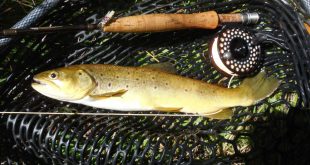To start with, the calendar says it is still officially fall until December 21st but it seems to me that winter has been here for several weeks now! The sudden mid-November intrusion of arctic air into our area may have been a bit early for some plants. We will have to wait until spring to see if any damage was done to buds and twigs not hardened off yet.
I thought I would mention a couple of things that can still be done outside for all of the die-hard gardeners among us. Firstly, if you have some turf areas that need a few more sprigs of green, you can still plant grass seed as a dormant seeding. The soil temperature is low enough now that grass seed will not germinate until next spring. The window for dormant turf seeding (usually blue grass and tall fescue) is late November through early March. The minimum input way of dormant seeding is simply to broadcast seed over the desired area (bare soil with no snow cover) and leave the work to Mother Nature with snow and winter freeze and thaw cycles to work the seed into soil contact. A better method is to prepare a seed bed by aerating heavily or by power raking or tilling and grading. Grading may be as simple as raking out the lumps and bumps to even out the soil bed a bit. Aerating can be done where turf is thin and you wish to save it as opposed to tilling which will likely kill any remaining turf. After grading, broadcast the turf grass seed and make sure to add 10-25% more seed to make up for loss due to feeding by animals or erosion. A straw erosion blanket could be used but is not necessary unless the site is prone to erosion. Starter fertilizer should be applied next spring. The planting will need to be watered next spring and summer during dry periods. If weeds become a problem next spring a broadleaf herbicide can be applied (this can damage young turf) but do not apply a pre-emergent herbicide as it will affect grass seed germination.
As long as you are outside you might as well do some mulching. Trees, shrubs and perennial flower beds can be mulched at this time also. Apply 2-4 inches of mulch around trees and shrubs, but do not pile the mulch against the trunks of trees or the stems of shrubs, stay back 6’’. Piling mulch around trunks and stems can lead to disease problems and invite rodents to gnaw and injure bark under the protection of the mulch. At this time of year decisions need to be made; cut back or leave plants standing when considering perennial flower beds. Leaving a few plants standing for winter interest (grasses) and bird food (Echinacea and Rudbeckia) as well as habitat is a good idea. The foliage of plants like hosta and daylily which turn to mush after freezing can be removed. Apply mulch about 2 inches deep evenly throughout the bed between plants. Again, try not to pile mulch over the crowns of the plants.
This is a lot of work, if only thinking about it – I need a nap.
 Nebraskaland Magazine
Nebraskaland Magazine



